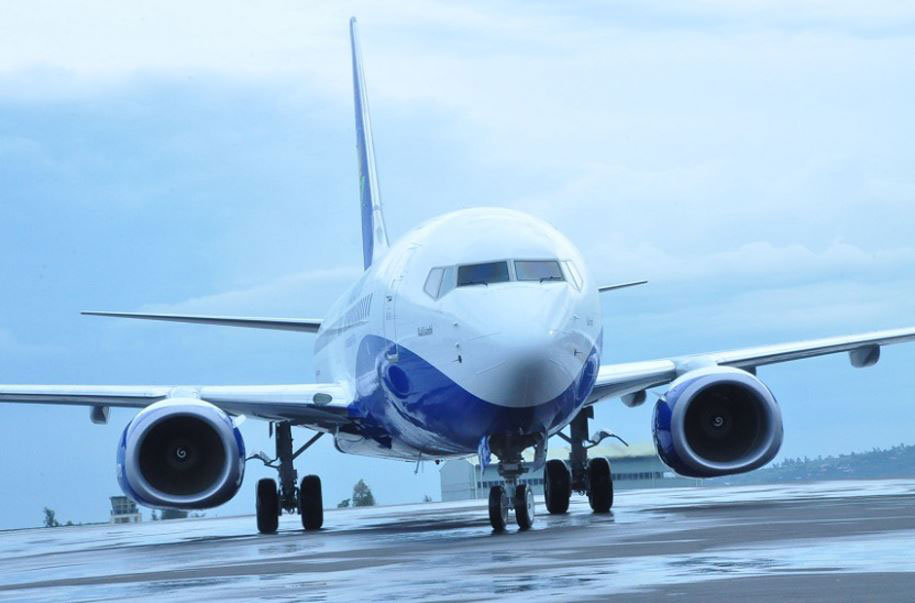
Rwandair
The national carrier Rwandair has dismissed reports of an engine fire on one of its planes in Tel Aviv, Israel on Wednesday, saying that it was a tailpipe fire –a usually common incident in aviation which is caused by unburnt fuel.
The airline responded to social media reports which claimed that there was a fire engine on its plane B737-800 NG from Tel Aviv to Kigali, saying that it was a small incident which delayed the flight temporarily but it later took off and arrived in Kigali safely.
“There is false information circulating about an “engine fire” on one of our aircraft. WB 503 from Tel Aviv to Kigali yesterday experienced a tailpipe fire while on the ground. This is a common occurrence caused by unburnt fuel in the exhaust nozzle of the engine,”
“The flight was delayed to ensure passenger safety, but left later in the day and arrived safely in Kigali,” the airline said.
Aviation experts say a tailpipe fire is not an engine fire and normally occurs on the ground which happens on the outside of the engine and does not give an indication of a fire in the cockpit.
“When it happens – often a result of unburned fuel on the tailpipe that ignites during engine start – engine is shutdown, fire extinguished/burns out, and engine restarted,” an aviation geek on Twitter @AeroSkippah explained.
Rick Luiz, an American long-haul pilot explained that often people confuse engine tailpipe fire and engine fire.
“A tailpipe fire is just unburned fuel in the exhaust nozzle of the engine igniting and well, catching fire,”
“What sets this apart from an engine fire is that an engine fire is contained within the engine itself, usually from just ahead of the combustion chamber on through to the turbine section including the surrounding accessory gearbox and components,” he explained.
He said tailpipe fires are put out by the engine’s fire extinguishing system through chemical agent sprayed into the affected engine after shutting the fuel supply, hydraulic, pneumatic and electric components off.
He said Tailpipe fires happen at the exhaust nozzle and are thus unaffected by discharging the extinguishing agents.
“The non-normal procedure calls for shutting the fuel to the engine and to continue motoring the engine until the fire consumes the pooled fuel and burns itself out. The procedure is very straightforward,”
“What would cause this fire in the first place? A faulty fuel control unit/ignition system are the usual culprits, but the important thing to remember is, if you see this out your window, remain calm…the fire should be out in under a minute,” he explained further.
Rick Ruiz is originally from Miami, Florida in the U.S. He is an international Boeing 747 pilot with the world’s largest operator of that aircraft type flying to destinations all over the world.
According to a blog about his aviation experience, he previously flew the Boeing 767 and then 777 and boasts of huge experience as an airline pilot specializing in long-haul flights.
The maiden direct flight of national carrier RwandAir from Kigali to Tel Aviv, Israel’s economic and technology hub, took off on Monday night.
Rwandair launched direct flights to Tel Aviv in June last year, making it the 29th destination for the national carrier. Rwandair operates the Tel Aviv route three times a week using the Boeing 737-800NG.

